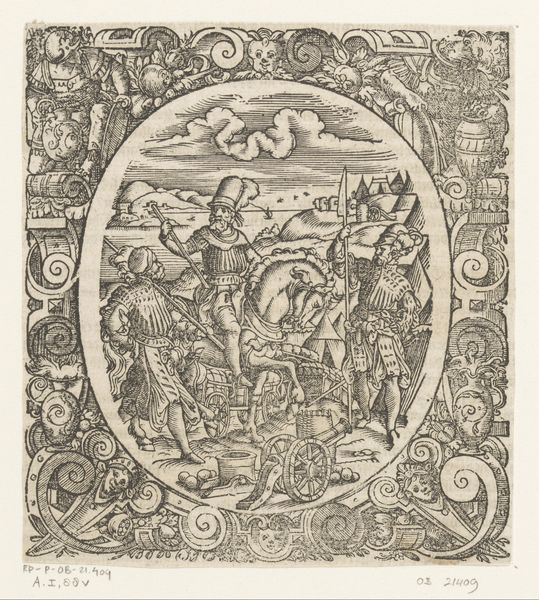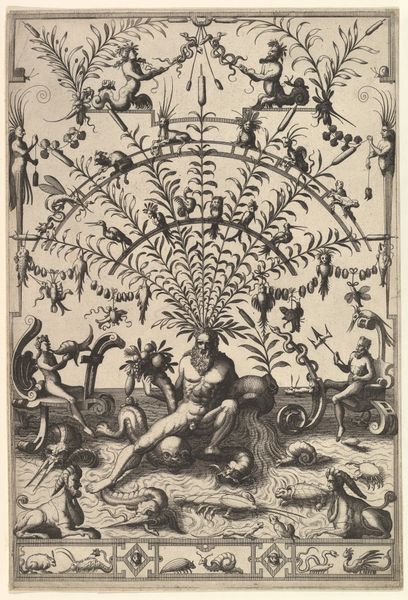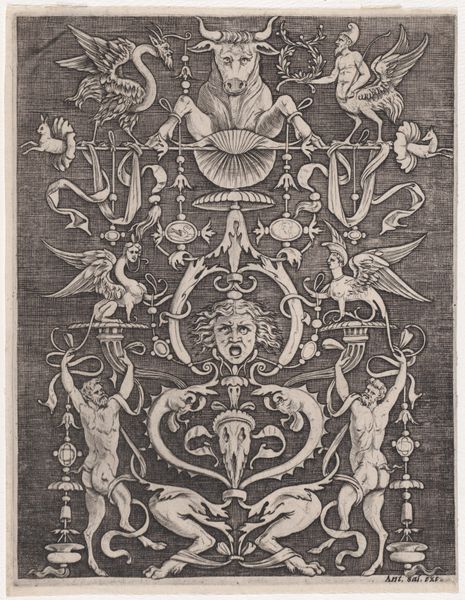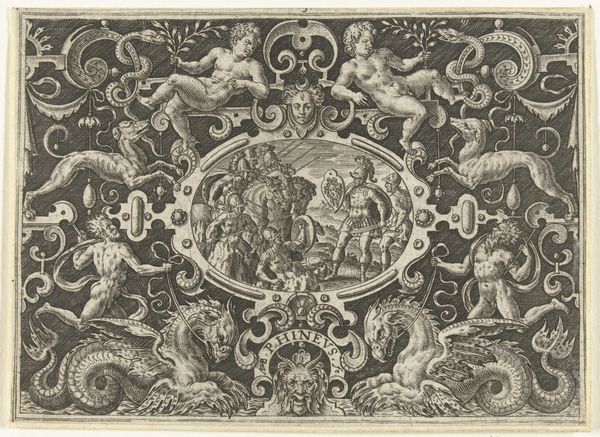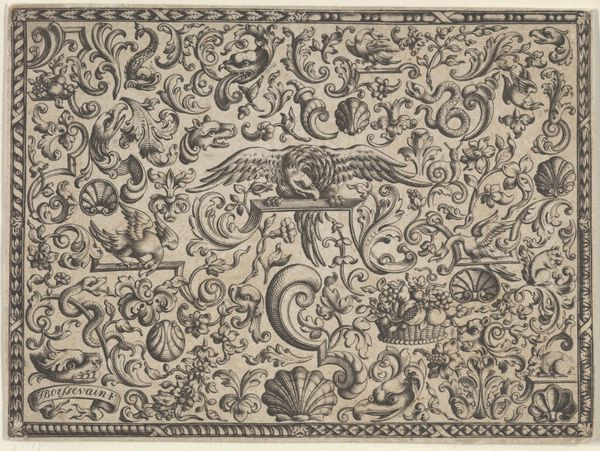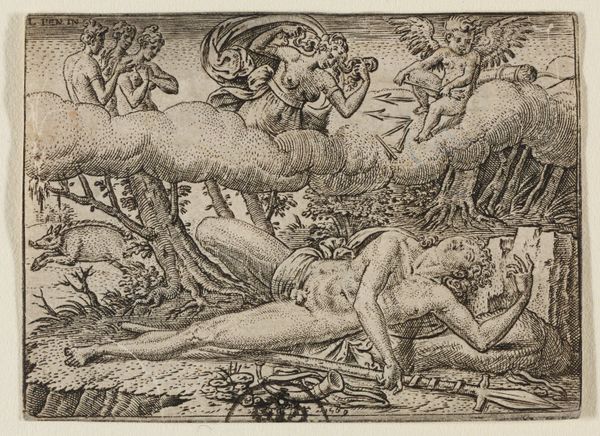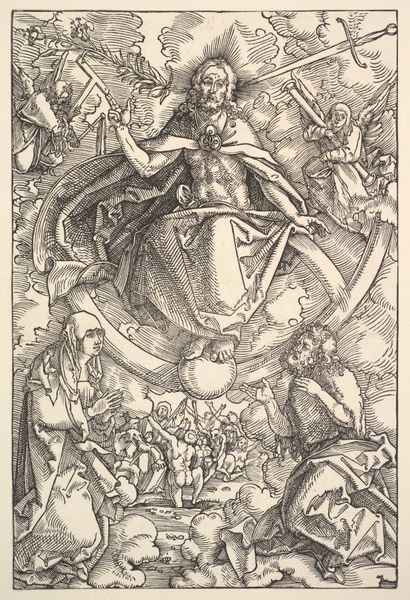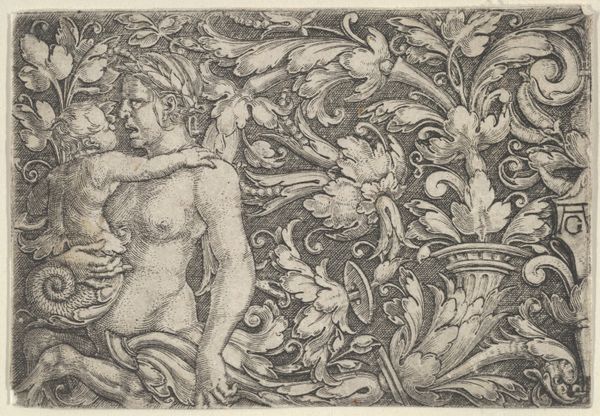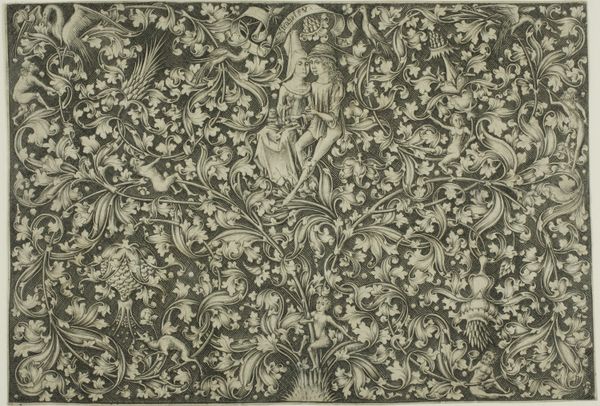
drawing, ink
#
drawing
#
allegory
#
pen drawing
#
pen illustration
#
pen sketch
#
figuration
#
ink line art
#
11_renaissance
#
ink
#
pen-ink sketch
#
thin linework
#
pen work
#
genre-painting
#
nude
#
coloring book page
#
doodle art
#
intricate and detailed
Dimensions: height 553 mm, width 669 mm
Copyright: Rijks Museum: Open Domain
This 16th-century print, made in the Netherlands by an anonymous artist, depicts a satyr family amidst grapevines. It's a scene of Bacchanalian revelry, evoking the classical world of myth and ritual. The image creates meaning through its visual codes. Satyrs, creatures of the forest, embody untamed nature and hedonistic pleasure. The grapevines signify abundance, fertility, and the intoxicating power of wine, a powerful symbol in Renaissance culture. The Rijksmuseum, where this print resides, plays a key role in shaping our understanding of Dutch cultural history. Was this artwork meant to reinforce social order, or to challenge it? Did it offer a vision of freedom, or a cautionary tale about the dangers of excess? These are the questions that art historians grapple with, using archives and historical sources to understand the complex social meanings of images. Art's meaning is never fixed but changes with its cultural and institutional context.
Comments
No comments
Be the first to comment and join the conversation on the ultimate creative platform.

